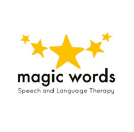Joy is a boy with autism and a beautiful heart, whose name has been changed in the following article for ethical purposes. The first time I saw him he was sat at his desk, with ear defenders and a blanket around him, gently reminding me that the world can be so overwhelming at times. We often don’t appreciate the efforts that individuals with autism make to be part of a world filled with neurotypical individuals.
Joy feels best supported when he is provided with visuals such as his communication book, a visual timetable and a ‘now & next’ board. He can answer questions when he is provided with choices, in the form of visuals that he can point to as his answer. He also follows single-part instructions when visual support is provided. Joy communicates his needs by pointing to an object/visual in his book and vocalising an ‘ah’ sound.
Having worked with Joy for some time, I have learnt the following from him:
Allow independence using language
We can be tempted to fulfil the requirements of pupils even before they ask for it, which only leads to them missing out on the ability to function independently. Take snack time! Using Makaton signing for the word ‘eating’, I asked Joy if he would like snacks. He imitated the sign for eating and said “ah” and he was provided with his snacks.
Another time, I observed someone offering a paper towel to Joy every time he got a runny nose. The next time I saw Joy in need of it, I said “Runny nose?” (pointing to the nose), and then, “Go and get a paper towel” and pointed to the visual for the paper towel in his communication book. He immediately got a paper towel and wiped his nose. He was learning to use his communication book beyond basic needs and took a step closer to independence.
Model language to teach language
Joy loves bus rides. Each time he would feel like going on one, he would point to the window. Amazing communication, but how would someone who is not familiar with him know that he feels like going on the bus? When he pointed out the window one day, I opened his communication book and showed him the visual for “bus” and said, “Joy wants to go on the bus, I understand”. The next few times, he was shown the visual for the bus when he pointed outside. Over the next few days, when he was asked if he wanted to do something during his break time, he began pointing to the bus visual!
Add language to pre-existing language
As I sat with Joy one morning, he tapped me on the shoulder and pointed to a picture on his iPad. It was a picture of him when he was younger. I knew I had found my language stimulation moment! I began adding more language to his communication by saying “That is Joy. Young Joy” and pointed at him. He then pointed to the picture and pointed to himself again. This was followed by him showing me all the pictures in his gallery as I commented in short sentences about all that I saw in a picture, accompanied with a lot of signs and gestures. He might not have picked up on all the language I provided that day, but if repeated on a daily basis – it will soon be in his vocabulary.
Patience really is a virtue
Sometimes, it may feel like swimming without ever reaching the shore when we are trying to support the young person in communicating. In these moments, it is always best to ponder upon the mode of communication we are striving for. Be patient with them as they are figuring it all out alongside us. At the end of day, it is our role to add to their skills: by allowing them to show us what those are.

Magic Words Therapy is an independent speech and language therapy service for children and adults. Working in schools, specialist settings and in our clinics across the South of England, our mission is to provide affordable therapy services that are accessible to all.
@MagicWordsSALT
Please login to view this content
Login